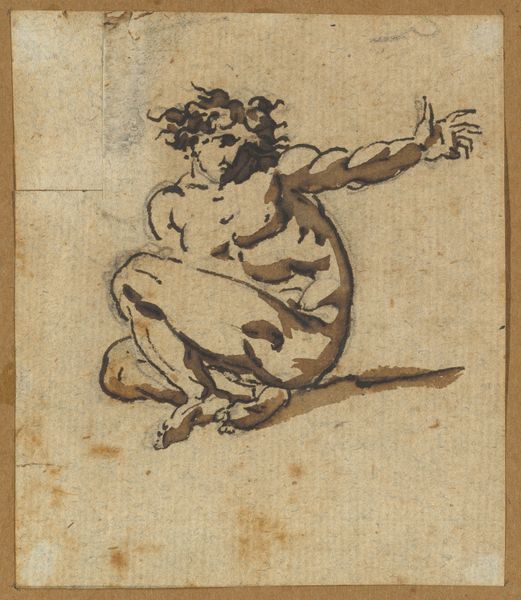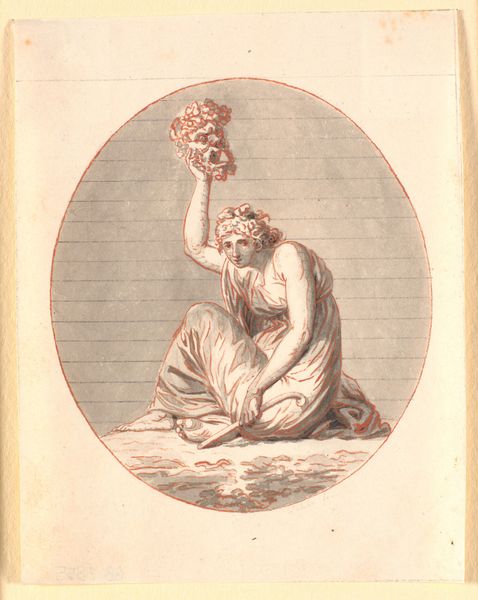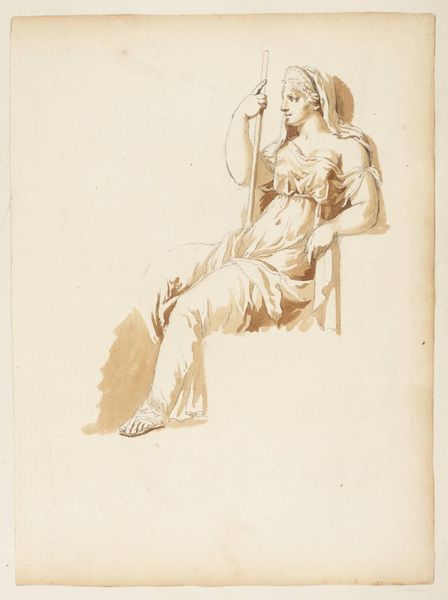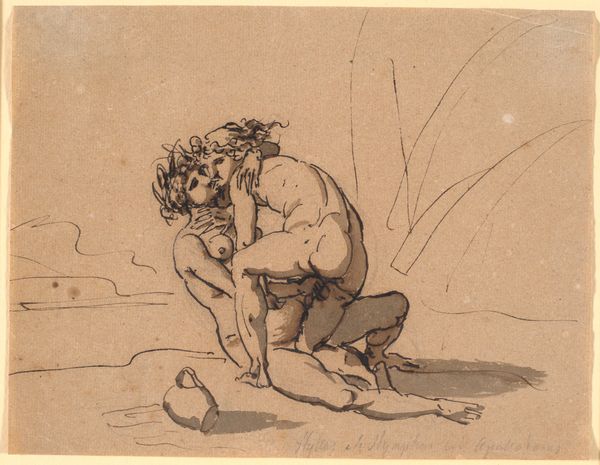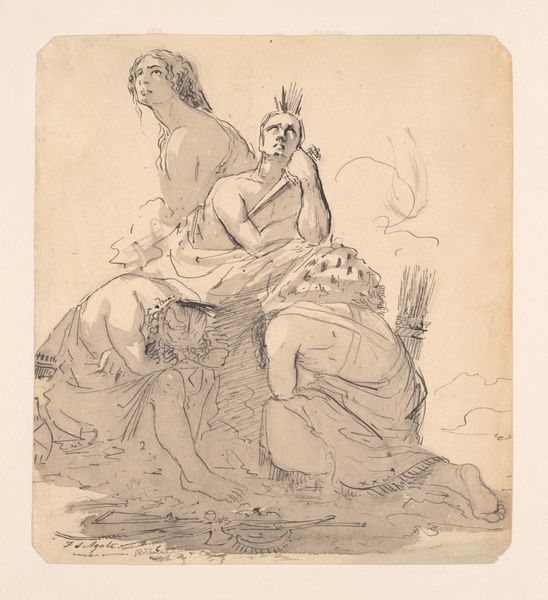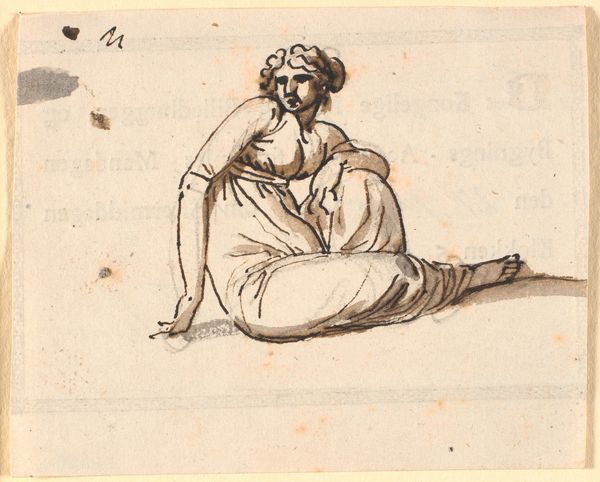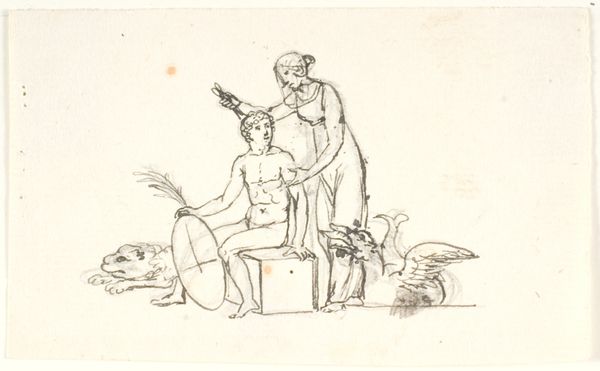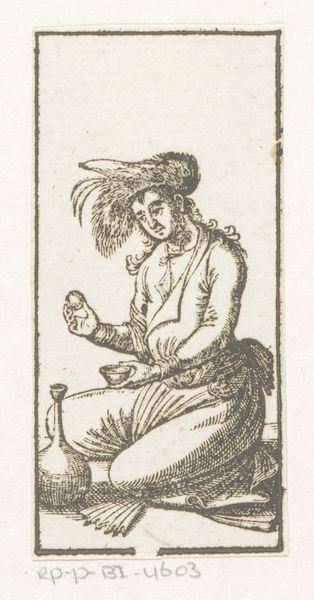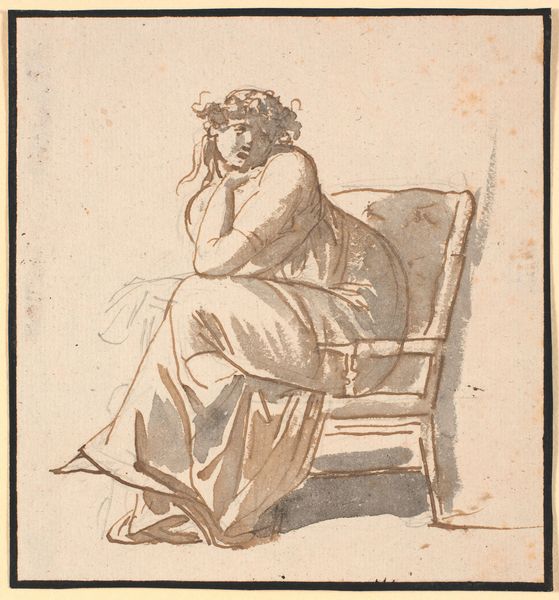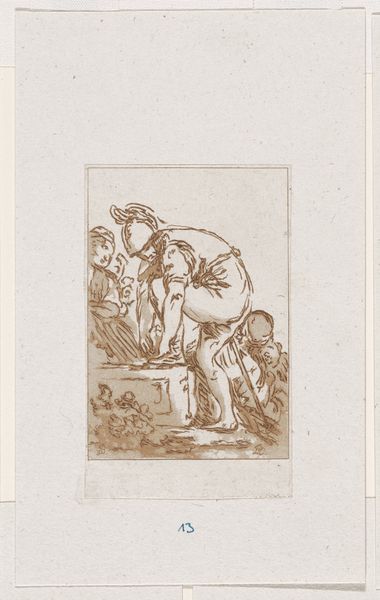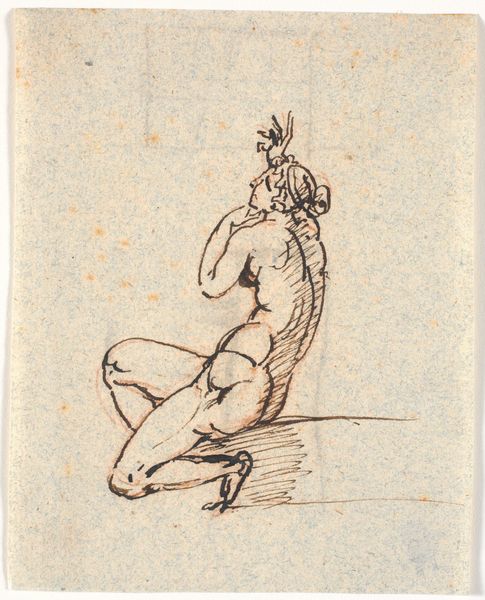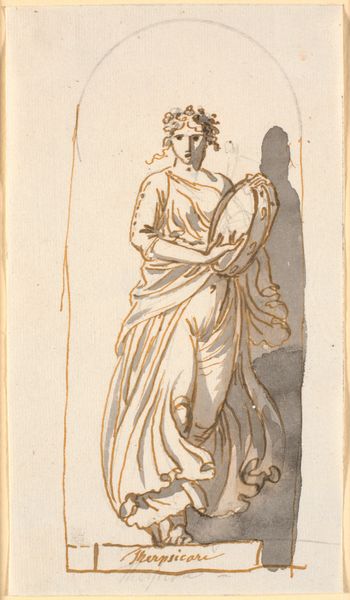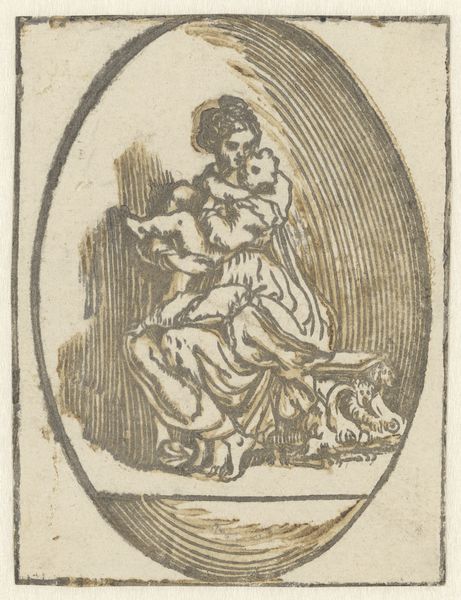
En siddende kvinde der løfter en maske højt op over sit hoved 1743 - 1809
0:00
0:00
Dimensions: 113 mm (height) x 88 mm (width) (bladmaal)
Editor: Here we have Nicolai Abildgaard’s ink drawing, made sometime between 1743 and 1809, titled *A Seated Woman Holding a Mask High Above Her Head*. The piece feels a little unsettling to me. I'm curious, what stands out to you? Curator: It's the materiality of the work that immediately grabs me. Look at the stark contrast between the fluid ink washes defining the figure and the scratchy, almost frantic lines used for the mask and the ground. It speaks to the economics of artmaking, doesn't it? This wasn't a commissioned piece; it’s likely a preparatory sketch, where the value lay in the rapid generation of ideas rather than polished refinement. What do you make of the pen strokes versus the washes of ink? Editor: That's a fascinating point. The ink washes do give the figure a softer, more idealized appearance. I guess the choice of using simple ink reflects its function, whereas if he would've been commissioned for something much larger he may have added much more. Curator: Exactly! And think about the mask itself. It's rendered so crudely, almost violently. It seems that it lacks as much precision and planning compared to other parts of the work. What does the act of 'masking' mean to the artist? Editor: Maybe it suggests the materials available and constraints on Abildgaard’s time or the statement and or maybe it hints that the role that materials may play in shaping identities during that period? The elite, versus everyone else, and what materials were available? Curator: Precisely! The contrast of the carefully crafted body and carelessly handled mask embodies the anxieties of the time: a social structure on the brink of revolution. Do we perform a mask and what does it allow us? Editor: Wow, I never considered the piece that way. It gives the artwork a whole new significance to consider how accessible these resources were depending on who commissioned or made it. Curator: Absolutely! Thinking about the production and what surrounds it completely changes the work’s intent.
Comments
No comments
Be the first to comment and join the conversation on the ultimate creative platform.
